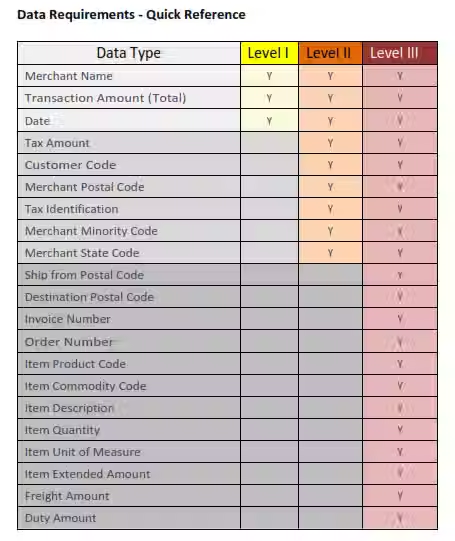Understanding Merchant Fees: Discount Rate vs. Downgrades
- merchantstatement
- Jul 18, 2023
- 4 min read
Updated: Jul 10
MERCHANT ACCOUNT SECRETS REVEALED – ONLINE SERIES – PART 3
In a previous article, I discussed the fact that many companies advertise a super low discount rate like 1.19%. I also mentioned that this doesn’t mean that you are getting the best pricing for your business.
Are you aware that merchant account providers have ways of getting you to pay more than the advertised merchant fees? For example, the 1.19% rate is only applicable to check cards or offline debit cards. Read the fine print and you will often see restrictions to getting that super low rate. This means that if you accept a standard credit card, you will pay some other rate like 1.69% or higher. Unless you are a retail location with a lot of foot traffic, you will not see many transactions fall into the 1.19% rate.
Another way to increase your actual rate is through “downgrades” or “buckets.” You might be familiar with the terms “Mid-Qualified” or “Non-Qualified” instead. These terms refer to additional discount fees leveled against you for credit card transactions that do not meet the special criteria outlined by interchange. These “downgrade fees” may involve charging you an extra 2% and $0.10 above your super low discount rate!
We call these downgrades “buckets” or “tiers” because the processor bundles the categories from the interchange pricing structure into several groups or “tiers” and assigns a specific rate that covers all the various interchange fees for that specific group or “bucket.” These usually appear as a Mid-Qualified rate or Non-Qualified rate on your merchant statement. Your merchant account provider knows all about this and hopes that you don’t. Some providers can structure the account to have most transactions downgrade one, two or more tiers so you never get the super low processing rate as advertised.
How does this all work together? Let’s say that you have an awesome super low rate of 1.19% and then a customer walks in with their credit card. Payment is accepted. The goods are sold! What you don’t realize is that the credit card the customer handed you was a business purchasing card. This means that the card went through at the higher 1.69% rate (standard credit) and also downgraded to Non-Qualified rate (corporate cards) for an additional 2%. That transaction now cost you over 3.69%. This clearly isn’t the 1.19% you were hoping for. This translates into $3.69 for every $100 charged. What would you do if all your transactions went through like that? You would have the second worst merchant account in history. I say the second worst, because I have seen merchant statements that show they are paying up to a 6% discount rate!
The point I am trying to make is that you need to find out what your “buckets” or downgrades are. Ask your merchant account provider what cards fall into the Mid or Non qualified categories. Second, you need to know what cards your business is currently accepting. Are you accepting many corporate cards? Will your customers be using debit cards? If you don’t know, then glance at a few months processing statements to get an idea of your processing history. Also determine what percentages of your transactions are keyed in. These transactions will always cost you more. The percentage fees will be higher for merchant accounts where the credit card is not present and must be manually keyed into a terminal to complete the sale. If your business keys in more than 50% of the total transactions, then you have what is called a MOTO account (Mail Order Telephone Order). This type of account has higher rates and may also have different downgrade buckets.

WHAT IS MY MID AND NON-QUAL RATE?
If you are like most merchants, reading your merchant statement can be difficult. While some providers report all the rates and merchant fees in an easy-to-read format, others do not. Usually, the Mid-Qualified and Non-Qualified rates are hard to determine.
How can you know what you are paying? Simply take the fee for the Mid-Qual or Non-Qual category and divide it by the Mid or Non-Qual volume. This will produce a decimal figure that is actually a percentage rate. It may be a surcharge to your qualified rate or may be the entire fee for those card types.
For example, suppose you are paying 1.77% for a qualified rate and farther down your merchant statement you see a Non-Qualified volume of $967.68 and a fee of $18.29. This means you will divide 18.29 by 967.68 which equals 0.0189 (1.89%). This is a surcharge amount. Therefore, you are paying 3.66% for Non-Qualified transactions (1.77 + 1.89).
ADDITIONAL TIPS TO UNDERSTAND MERCHANT FEES
Look for the "Mid-Qualified" and "Non-Qualified" sections. These sections will show you the rates and fees that you are charged for transactions that do not meet the criteria for the qualified rate.
Pay attention to the volume of transactions in each section. If you see that a large percentage of your transactions are being charged the Mid-Qualified or Non-Qualified rate, you may want to talk to your merchant account provider about getting a better rate.
Keep track of your merchant statement fees over time. If you notice that your fees are increasing, you may want to shop around for a better deal. By understanding your merchant statement, you can be sure that you are getting the best possible rate for your credit card transactions.




Comments